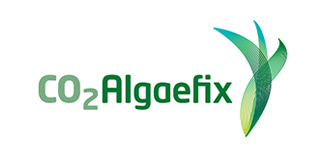FULL PROJECT INFORMATION
The main objective of the CO2ALAGAEFIX project is the fixation and capturing of CO2 from electricity power plants through the cultivation of microalgae, and thus a flat vertical bioreactor prototype will be developed that optimizes the efficiency of CO2 capturing for its transformation into biomass and energy.
The production capacity of the plant is approximately 100 ton/year of microalgae biomass. These resources could be of interest and use for sectors such as aquaculture, cosmetics, health, human food or animal feed and agricultural fertilizer.
The location chosen for the prototype is Arcos de la Frontera (Province of Cádiz) and the site selection has been made according to the two main technical factors:
- The availability and intensity of light are the main factors that control the productivity of the growth of the photosynthetic microorganisms, and in this sense, Andalusia has a privileged location to establish and strengthen the development of this technology.
- Carbon (as CO2) is a necessary nutrient for algae growth. It has been demonstrated that certain species of microalgae tolerate combustion gases such as carbon sources. The combined cycle at Arcos de la Frontera, is one of the largest installations of this technology in Spain. The data of CO2 emissions to the atmosphere of this installation ensures the availability of the element.
The key objective of the CO2ALGAEFIX project is to demonstrate, at a one hectare surface scale, an efficient way to capture CO2 from stationary sources (in this case, a power plant that uses natural gas). It aims to demonstrate that CO2 emissions can be used as a substrate for biomass algae production.
The project will use a 10.000 m2 pilot plant constructed by Algaenergy for experiments in microalgae cultivation. It aims specifically to test and demonstrate a new photobioreactor concept based on flat panels as the basis for a highly efficient large-surface culture plant. The process proposed will include novel technologies to capture and concentrate CO2, and make it available for culturing microalgae.
Through ongoing evaluation and optimisation of the pilot plant’s design, and its connection to the CO2-generation plant, the project hopes to achieve increased CO2 bio-fixation and the photosynthetic efficiency of microalgal cultures. The surface of 1ha of the demonstration plant is expected to capture and fix more than 200 tonnes of CO2 per year. If successful, the technology should easily scale-up to industrial level.
CO2ALGAEFIX will also evaluate possible uses of the microalgae, for example, in the production of energy, or in the production of valuable compounds for different economic sectors.
Expected results:




